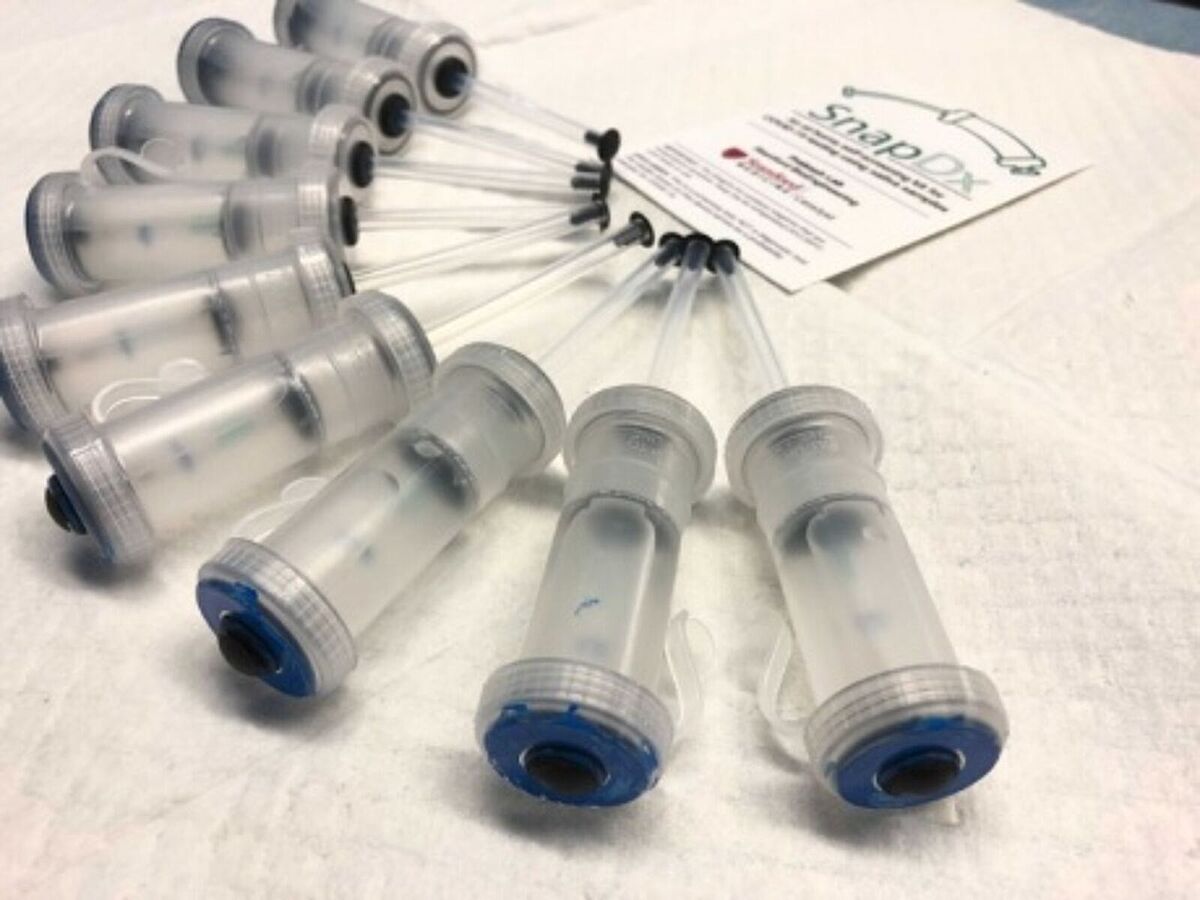Researchers at Stanford University have developed a rapid, low-cost COVID-19 saliva test that they plan to commercialize for use at home. The test, called SnapDx uses reverse-transcription loop-mediated isothermal amplification (RT-LAMP) with colorimetric readout and requires no lab instrumentation.
The test comes in two versions that use the same cartridge: one that only needs a cup of boiling water and another that relies on a small, cheap heating device. At the heart of SnapDx lies a syringe-like cartridge that consists of a fat plastic tube with caps at both ends and a plunger filled with reagents that runs through its center.

Following five minutes of cooling, they push the plunger through the tube up to a certain mark and then bend the plunger until they hear a glass vial snap inside, which releases the reagents into the tube. After pushing the plunger to the end and tapping the tube a few times for mixing, they fully immerse the tube into the cup of now less-than-boiling water and leave it there for 30 minutes for the reaction to proceed.
After that, the results can be read out by looking at the color of the plunger near the cap: if it's purple or orange, no virus is present, but if it's yellow, the test has detected SARS-CoV-2.
Home-use COVID-19 tests like SnapDx might give the at-home diagnostic testing field in general a nudge, just like the pandemic has pushed telehealth forward. The Stanford team says "We've seen clearly with respiratory viruses, and this particular one, that what we don't want is bring people who are sick into the community for testing. What we want for them is to stay at home until they're no longer infectious, so it is really important for respiratory viruses to have home-based testing."
